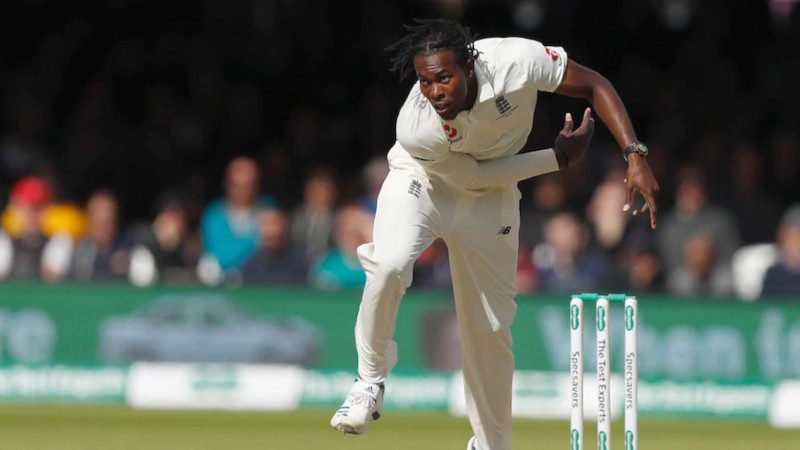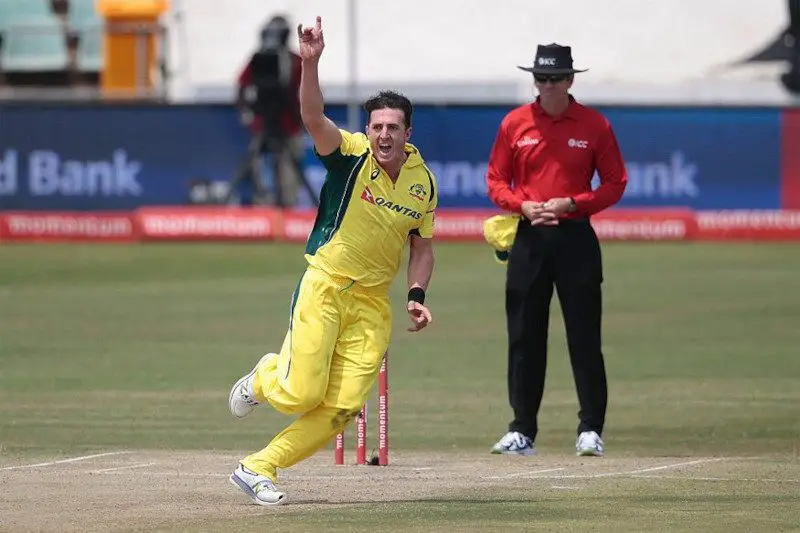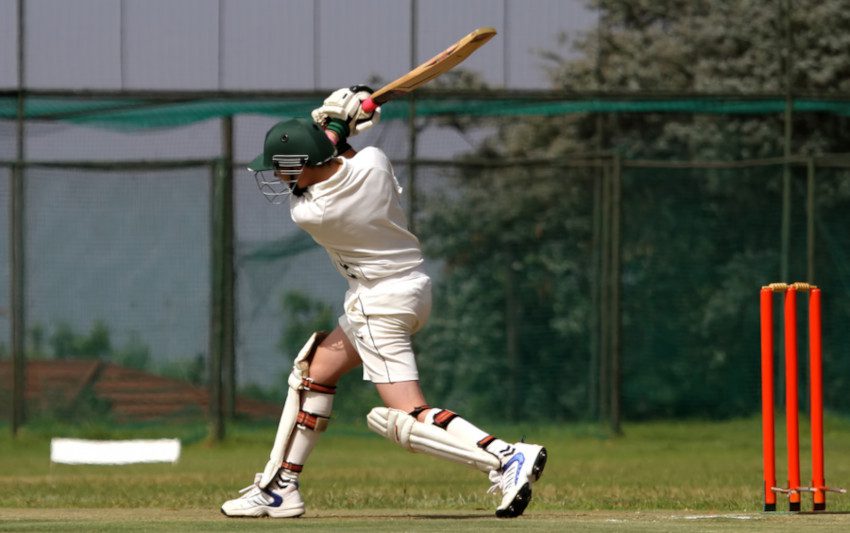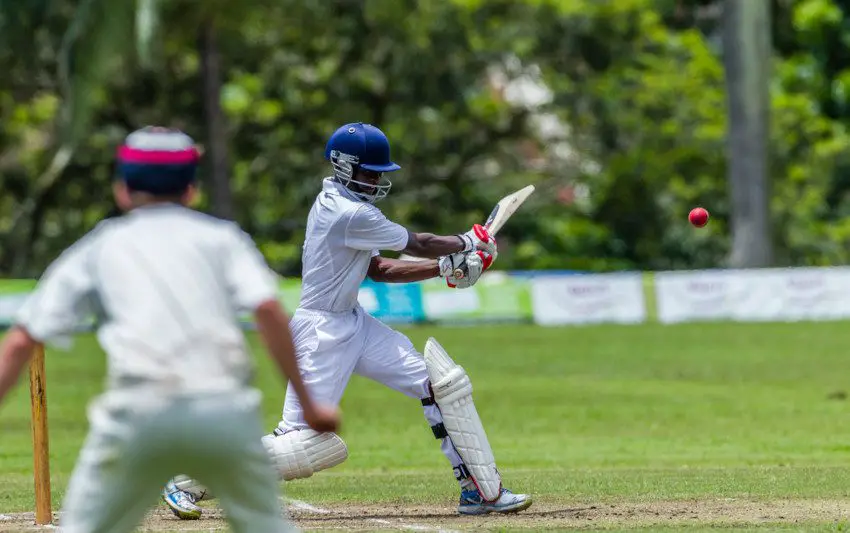Table of Contents
Fast bowling is the one part of the game that can bring the fear factor for new players so, in this article I’m going to look at some tips and drills that will allow you to play it more confidently.
How to Play Against Fast Bowlers
In order to learn how to play fast bowling you should build confidence by learning how to use your technique and skills as a batsman. Use batting specific drills to prepare yourself.
As your confidence develops, your ability to play the faster bowlers will also increase. It all starts before you play the ball so you should be looking at footwork and the ability to judge a delivery before choosing the right shot.
12 Tips and Drills to Play Fast Bowling
1. How to Face Fast Bowling and Stay Confident
Fear of a cricket ball can be natural and there are ways in which you can build up your confidence. Start by acquiring all the right protective gear and start to work on positive visualisation.
Set a goal and work towards it. This could involve facing a bowling machine in the nets where you start with medium pace deliveries and gradually turn up the speed. Alternatively, use a tennis ball or training ball to begin with.
Tip: The best way in which to deal with fear and build confidence is to use the right technique. It doesn’t matter if you start with a softer tennis ball; if you start connecting with that ball and approach with the right defence then the confidence will come.
2. Choose a Batting Stance for Quick Reaction
Needless to say, your reaction time will be reduced when facing a fast bowler as opposed to a spinner. We therefore need to begin by adopting the kind of stance that will help you to get into the right position more quickly.
You should put your weight onto the balls of your feet as this can allow for faster spring and foot movement. It can be a good idea to ‘open’ your stance more. This involves turning your body very slightly towards the bowler which can give you a better view of the ball as it’s delivered.
Tip: Feet should be shoulder width apart, knees should be bent slightly and your head should be turned so that it is fully facing the bowler.

3. Practice Judging Line and Length
Having the correct stance helps you to move into position once your eyes have determined where the ball is likely to pitch. Judging line, length and the speed of the delivery are the next steps if you want to learn how to play fast bowling.
Obviously, you should be watching the ball closely as it leaves the bowler’s hand. Keep your head still and your eyes focused.
Tip 1: Keep your eyes and head level.
This is the way that humans can best digest and assess any situation and it’s how you are more likely to pick up the speed and trajectory of the ball.
Tip 2: Leave as many balls as possible.
This can be especially true early on in your innings when you’re getting used to the speed of the particular fast bowler.
For that reason, it’s suggested that you take guard so that your eye line is on off stump. That should allow you to judge the balls that you don’t need to play at and you can therefore leave them to pass harmlessly by.
4. Forget About Trigger Movements
A lot is said about the batsman’s trigger movements as the bowler runs in but are they necessary? There are two schools of thought here but many cricket coaches feel that they can be a distraction, especially against the faster bowlers.
One of the issues with trigger movements is that they can make the batsman less focused on the ball.
They are so conscious of where their feet should be that they forget about watching the ball and keeping still at the point of delivery.
Those coaches also cite a batsman like Sachin Tendulkar who was one of the best ever. Watch him play the faster bowlers and you’ll see that he keeps perfectly still with no trigger movements until the ball is delivered.
5. Keep Your Weight on the Balls of Your Feet
This has already been touched upon in the previous section but it’s worth going into in greater detail. If you want to know how to play fast bowling, this will give you a strong starting point.
Firstly, the balls of your feet are located towards the front, between the arch and the toes. There is a hard, fleshy surface that you will feel as you roll your foot from back to front.
Being on the balls gives you a good balance and will allow you to move forward or back when the (cricket) ball is delivered.
Practise this drill in the nets and it will allow you to get in position more quickly to play full deliveries. For shorter deliveries, being on the balls of your feet lets you play or move out of the way with greater speed.
6. Use a Lower Backlift
This is a tip that the professionals use and the reason for that is an obvious one. A high backlift means that it will take longer for the batsman to bring that bat down to play the ball.
A shorter backlift means that the bat is closer to the ground and can reach the ball more quickly at the point where you need to play it.
We’re talking about fine margins here but they can literally make the difference between playing the ball effectively and seeing your stumps cartwheeling back towards the boundary. With fast bowling, any technique that gives the batter more time is worth exploring.
7. Batting Footwork is Key!
Being correctly prepared and being on the balls of your feet allows you to move to the next stage. Footwork is key to getting in the correct position to play the right shot or to leave the ball.
Those feet also need to be quick and there are recommended drills to increase your speed.
Batting Footwork Drills
You’ll need to make a ladder out of a rope and you should also have a piece of equipment known as a kinetic band.
There are two drills that you can employ here:
Drill 1: Firstly, start by tapping the outside of the right foot on the ground and bringing the left foot inside and outside of the ladder. This can help with coordination and to speed up those feet so look to increase the pace.
Drill 2: You can use the ladder again. The aim here is to sprint from one end of that rope ladder to the other. We want to put both feet inside each step without touching the ladder itself so we are running on the tips and balls of each foot.
Once again, look to move as quickly as possible and to increase that pace as you go.
8. Choose Your Shot Wisely
Fast bowling can cause lots of issues when it’s accurate but, if the bowler strays from their line and length, it can also provide plenty of scoring opportunities. Obviously, you should be more cautious and be prepared to play defensive shots when they are necessary.
If the ball is straight or on off stump, the best shots are the forward defence or the backward defence – depending on the length.
However, if the bowler gives you any width, front foot drives, back foot drives and the pull shot come into play.
Drill: Set up a bowling machine to send down all types of delivery and this will help you when it comes to choosing the right shot. Remember, pace on the ball means that the ball will travel quicker off the bat and the fast bowlers can offer scoring opportunities.

9. Practice Playing Short Balls
The short ball is the key weapon in the fast bowler’s armoury. It can make the batsman hurry their shot and they could also be concerned about being hit. The bowler may use it as a regular tactic or it may be an occasional delivery which is intended to be used as a surprise.
Be prepared to have to play the short ball with regularity. Set up the bowling machine to do this or, if you can find some willing teammates, get them to consistently deliver some short balls in the nets.
10. Change the Line and Length
Bowlers can get into a rhythm which will tie down the batsman and make it difficult to score runs. A nagging and accurate line and length is one of the best weapons in the bowler’s arsenal and it can make you frustrated and play a poor shot.
One of the ways to counter this is to make the batsman change their line. Try advancing down the wicket or making a step to the leg side as they run in to bowl. You can also stand outside of the crease in your regular stance.
This is something that you will need to practise extensively in the nets so you’ll need to find a willing teammate who is happy to bowl for a long time.
11. Improve Your Reaction Time
You know that you will need fast reactions if you want to understand how to play fast bowling effectively but knowing this and putting it into practice are two different things. Speeding up reaction time can make the difference between hitting a ball for four and seeing your stumps uprooted.
We react more quickly when we have to and the process of practising fast bowling can be speeded up.
Drill 1: Get a friend or family member to hit a tennis ball at you, with a tennis racquet, from close range. This should help to sharpen the eyes, and those reflexes, as the ball travels towards you with great speed.
Drill 2: Take this a stage further by using training balls at higher speeds and from shorter distances. Make sure that you still have appropriate protective equipment.
12. Keep Practicing
At any level of cricket, we’re always going to come up against the pacemen so it’s important to know how to play fast bowling. This guide has given you the best drills recommended by coaches so please do follow them closely.
As with any sport, practise is vital if you are going to follow through with those skills and be effective in a match situation.
This is a long learning curve and the drills that are outlined here are not going to change your play overnight.
With many of these suggestions, you can even practise shadow batting at home but you should also spend plenty of time in the nets ahead of those important games.
Protective Gear for Confidence
A hard cricket ball can hurt and that’s why the pace bowlers are the most fearsome members of the opposition. These drills will help but your confidence can start to be built up by using the right protective gear.
Look to wear a helmet as an essential piece of equipment while you can also consider using an arm guard, a chest guard and a thigh pad as extra areas of defence.


